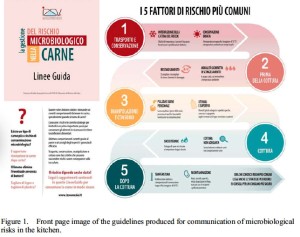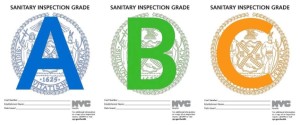Foodborne diseases are a major public health problem. Improper storage and food preparation at home can favour microbial contamination of food. Consumers play a crucial role in controlling this risk. To reduce exposure to risk, it is essential to provide information and guidance on contamination management in the home.
 The aim of this study was to pilot a method of participatory communication addressed to young consumers and designed to reduce the microbiological risks associated with the consumption of meat products. The methodology was based on application of the ‘consensus conference’ model on food safety issues. The consensus conference served not only as a participatory strategy to share knowledge but also as a method for sharing in the development of risk communication content (guidelines) to be disseminated to the reference target.
The aim of this study was to pilot a method of participatory communication addressed to young consumers and designed to reduce the microbiological risks associated with the consumption of meat products. The methodology was based on application of the ‘consensus conference’ model on food safety issues. The consensus conference served not only as a participatory strategy to share knowledge but also as a method for sharing in the development of risk communication content (guidelines) to be disseminated to the reference target.
Young people’s perceptions, habits and behaviour in the kitchen were explored in the preparatory stage of the consensus conference by means of a survey and a focus group. Three consensus conferences were held in Italy attended by 60 university students (19 and 22 years old). Application of the consensus conference model as a communication process proved to be an effective opportunity to engage young consumers and experts on the topic of food safety. This discursive participation approach was broadly welcomed by the participants. Specifically, direct interaction with the experts was considered to be an important part of the communication process.
 The findings of the project were used to select concise communication content based on the perceptions, behaviours and fact-finding needs of the selected target. Publication of this content in the form of guidelines on microbiological risk management at home has enabled the results of the consensus conferences to be extended and the targeted communication material on risk reduction in daily food handling practices to be disseminated.
The findings of the project were used to select concise communication content based on the perceptions, behaviours and fact-finding needs of the selected target. Publication of this content in the form of guidelines on microbiological risk management at home has enabled the results of the consensus conferences to be extended and the targeted communication material on risk reduction in daily food handling practices to be disseminated.
Reducing microbiological risk in the kitchen: piloting consensus conference methodology as a communication strategy
Journal of Risk Research
Licia Ravarotto, Stefania Crovato, Claudio Mantovani, Fabiano D’Este, Anna Pinto, and Giulia Mascarello
http://www.tandfonline.com/doi/abs/10.1080/13669877.2015.1017828#.VQ3iZouR9UQ


